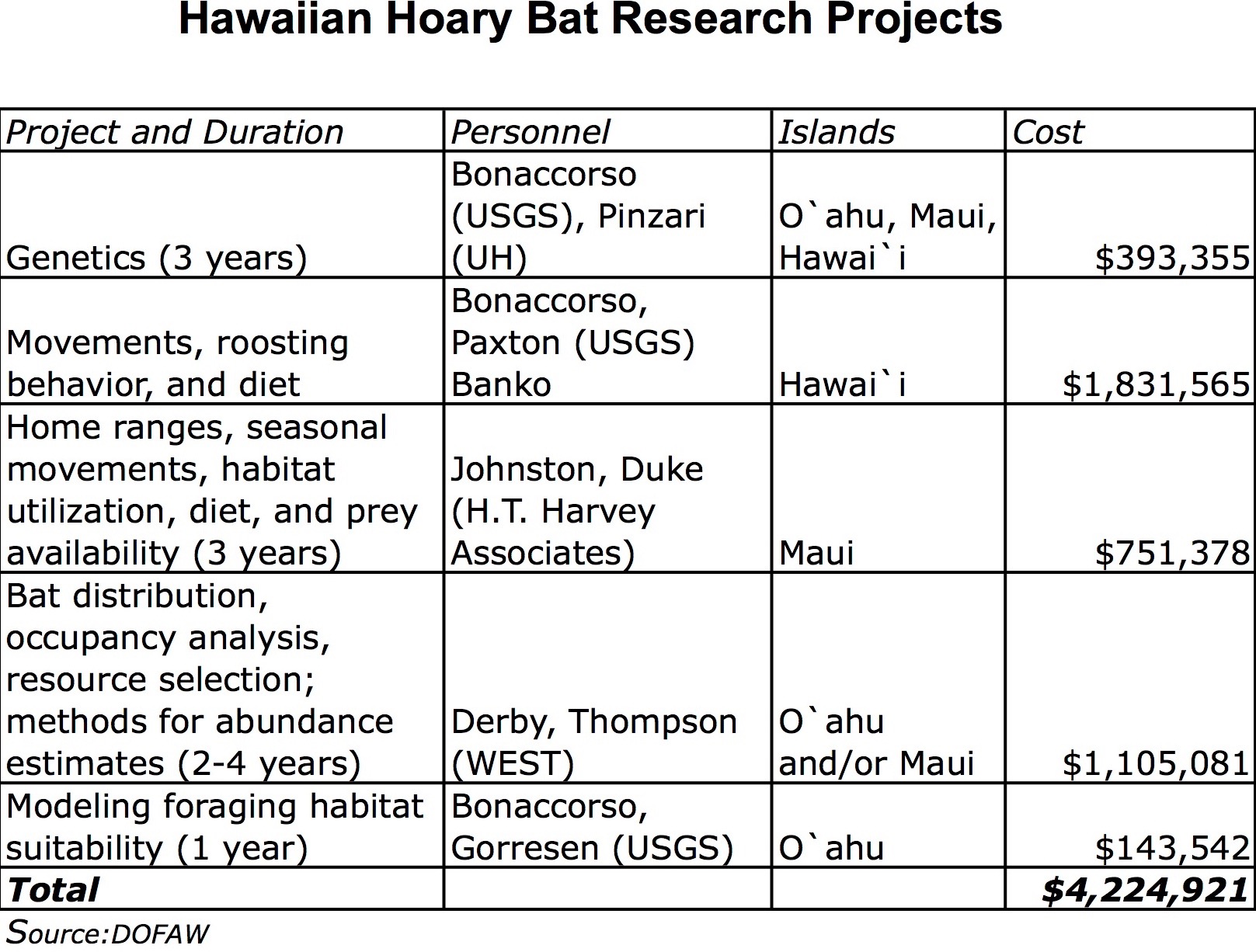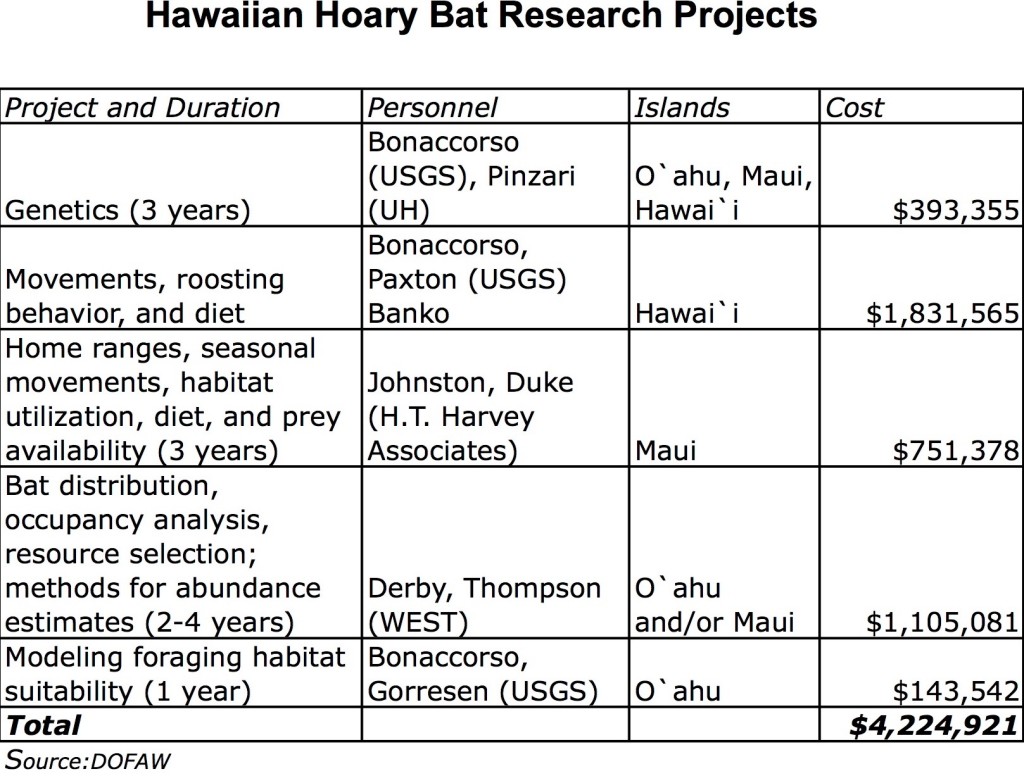Operators of Hawai`i’s wind farms are poised to spend more than $4 million on efforts to fill critical knowledge gaps regarding the endangered Hawaiian hoary bat, and may eventually spend up to $6 million.
“We’re starting a massive research push,” said Jodi Charrier, a biologist with the U.S. Fish and Wildlife Service.
As part of mitigation required by their Habitat Conservation Plans, all of the wind farms in the state have had to commit funds to support research on the bats, which are killed by the facilities’ turbines.
The state’s Endangered Species Recovery Committee (ESRC), which includes scientists and representatives from the Fish and Wildlife Service and the state Division of Forestry and Wildlife (DOFAW), identified in 2015 its top research priorities with regard to the animal. Last September it approved a handful of projects from 17 responses to a request for proposals.
The projects will ultimately give resource managers a better picture of the bats’ diet, range, habits, and genetic distribution, among other things.
With regard to the proposed genetic work, which may expand on recent studies suggesting that there may be two genetically distinct populations of bats, former committee member Sam Gon said at a recent meeting that the work could answer questions of how important the O`ahu populations are.
“If they’re essentially homogeneous with the rest of the archipelago, then you worry a bit less about them,” he said.
What none of the research projects directly addresses is whether or not the bat mitigation conducted so far has had any positive effect.
“Up to this point, there has not been a robust way of demonstrating that these projects have offset the take requested under the HCPs, or if the net benefit requirement has been met,” DOFAW Maui branch manager Scott Fretz told the ESRC.
Committee member Jim Jacobi expressed some hope at its meeting last December that the results of the studies to be conducted will quickly be put to use in assessing the benefits of mitigation.
“We don’t want to wait five years for that. We want to have that happen fairly quickly here because we have several projects where mitigation is doing habitat enhancement and we’re sort of guessing,” he said.
Also absent from the list of projects is any work on methods to keep bats away from wind turbines. Even so, Charrier said that work on UV lights and acoustic deterrents have shown they both have potential.
— Teresa Dawson



Weniki
Thank you for the welcome news of planned research on the ‘ope’apea, the island’s unique bat specie. Large populations can absorb some loss caused by renewable energy production. It appears that little is known about the population size of the bat and it is puzzling that none of the research will address this. Can risk to the species be understood and are we slowing renewable energy growth without this basic knowledge?
Theresa Menard
I believe more effort needs to be given to working out a win-win situation. I am all for the State’s renewable energy goals and I am also for a healthy bat population. Given the existing situation where the “benefit” of the mitigation (i.e. habitat restoration and land acquisition) is unknown, I am troubled that more is not being done to kill fewer bats. If we can’t be sure we are producing more bats, then we should at least attempt to kill fewer bats. As one of the reviewers of the 17 research proposals for bat mitigation, I was frustrated that the one proposal seeking to research a new technology known as a “turbine integrated mortality reduction” (TIMR) system was immediately rejected by the US Fish and Wildlife Service. This TIMR system essentially detects real-time bat activity near the wind mill and monitors weather conditions then combines these data to curtail the turning of the blades. This “smart curtailment” system in Wisconsin demonstrated an 83% reduction in bat fatalities with only a minimal loss of power generation. We should be doing this in Hawaii, or at least testing it out. Why is the USFWS rejecting research on this potential new technology? It was explained to me that the TIMR counts as an “a minimization or avoidance” measure, but not as “mitigation”. In other words, the USFWS is saying that the wind farms are already responsible to avoid and minimize take to the maximum extent practicable so USFWS doesn’t want mitigation funds to be used for that purpose, even if the actual purpose is to do research to learn how to minimize in a more effective way. My hope is that the USFWS will reconsider their position and allow research on a minimization measure to count as mitigation in this case. We need data supporting the effectiveness of proposed minimization solutions.